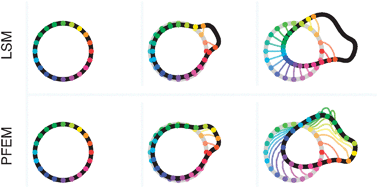Use of the parameterised finite element method to robustly and efficiently evolve the edge of a moving cell†‡
Abstract
In this paper we present a computational tool that enables the simulation of mathematical models of cell migration and chemotaxis on an evolving cell membrane. Recent models require the numerical solution of systems of reaction-diffusion equations on the evolving cell membrane and then the solution state is used to drive the evolution of the cell edge. Previous work involved moving the cell edge using a level set method (

- This article is part of the themed collection: Mechanisms of directed cell migration

 Please wait while we load your content...
Please wait while we load your content...